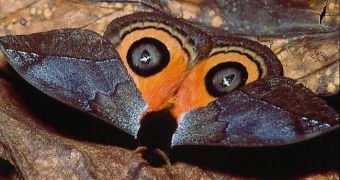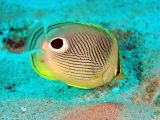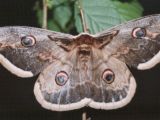Most birds and mammals are intimidated when someone stares at them.
When lemurs are in danger, they stare at their enemy with their big, round eyes trying to intimidate it.
Generally amongst mammals, a subordinate individual will avoid looking the dominant individual in the eyes. This is valid from rats to carnivores (like tigers, wolves, dogs) and primates (from monkeys to gorillas), because staring is a means of defying, a challenge to fight.
You can escape dog attack by avoiding looking into their eyes, and researchers escaped from tiger attacks by doing this (of course, females protecting their cubs, not attacking for a meal).
Birds cease their mating dance if somebody stares at them.
Starting from the effect induced by the staring eyes, natural selection created "supplementary eyes", fake eyes employed for deceiving or scaring the enemies. Many species of the butterflyfish (genera Chaetodon and Chelmon), living on the coral reefs, have black spots imitating eyes near their Tails. When a predator attacks one of these fish, it usually takes the tail as the fish's head (the contour of the real eyes is masked by a black line) and the fish escapes in the opposite direction.
The famous cobra snakes, one of the most venomous in the world, have a pair of fake eyes on their hood, meant to scare the enemy when the snake starts its display. Of course, the snake can easily kill its opponents with the venom, but the venom consumes a lot of resources to be produced, so that the snake prefers to chase away its enemies, rather than bite them.
The eye motif is very common amongst insects, but in a more concealed way.
Insects have two pairs of wings.
In those employing the eye motif, the external pair of wings usually has a dull color resembling the rest of the body and the environment and occulting the insect from predators or prey, while the inner pair of wings has vivid colors and a big "eye" on each wing.
If a predator attacks, the insect usually puts aside the external wings, opening suddenly the inner wings. Most predators are scared by the sudden change and by the big eyes, that makes the insect resemble the head of a bigger animal.
This occurs in some locusts, grasshoppers (Tanusia), praying mantis, moths (eyed hawk-moth Smerinthus ocellata, Automeris). In many butterfly and moth species, the eye pattern is not concealed, like in the case of the owl butterfly (Caligo), giant peacock moth (Saturnia pyri), Tau emperor butterfly (Aglia tau), peacock butterfly (Inachis (Vanessa) io).
The eye pattern also appears on other arthropods, like the marine mantis shrimp.
An "eye" defense mechanism is also found in the four-eyed or false-eyed frogs (Physalaemus) from tropical America.
The frogs have on their rear back part a pair of big black "eyes". When threatened, one of these frogs turns around towards their enemy, rear first, and inflates itself. Most predators are scared by the sudden change and think that they're facing the head of a bigger animal.

 14 DAY TRIAL //
14 DAY TRIAL // 


